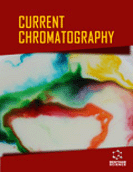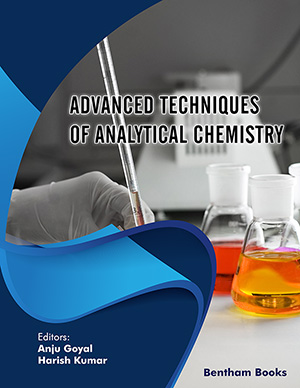[1]
Yinon, J.; Zitrin, S. Toxicity and metabolism of Explosives; CRC press: Boca Raton, 1990.
[2]
Yinon, J.; Zitrin, S. Modern methods and applications in analysis of Explosives; Wiley & Sons: Chichester, 1993.
[3]
Turesky, R.J.; Le Marchand, L. Metabolism and biomarkers of heterocyclic aromatic amines in molecular epidemiology studies: lessons learned from aromatic amines. Chem. Res. Toxicol., 2011, 24, 1169-1214.
[4]
Kovacica, P.; Somanathana, R. Nitroaromatic compounds: environmental toxicity, carcinogenicity, mutagenicity, therapy and mechanism. J. Appl. Toxicol., 2014, 34, 810-824.
[5]
Shen, H.; Gao, J.; Wang, J. Assessment of toxicity of two nitroaromatic compounds in the freshwater fish Cyprinus carpio. Front. Environ. Sci. Eng., 2012, 6(4), 518-523.
[6]
Kirui, W.K.; Wu, S.; Kizito, S.; Carvalho, P.N.; Dong, R. Pathways of nitrobenzene degradation in horizontal subsurface flow constructed wetlands: effect of intermittent aeration and glucose addition. J. Environ. Manage., 2015, 166, 38-44.
[7]
Zhao, L.; Lu, Z.; Tan, S.; Ciren, J.; Tan, C. Effects of glucose and starch on the toxicity of nitrobenzene to plants and microbes in constructed wetlands. Sci. Total Environ., 2019, 658, 809-817.
[8]
Lin, Y.; Yin, J.; Wang, J.; Tian, W. Performance and microbial community in hybrid anaerobic baffled reactor-constructed wetland for nitrobenzene wastewater. Bioresour. Technol., 2012, 118, 128-135.
[9]
Lu, L.; Liu, W.; Wanga, J.; Zhong, H.; Liu, J.; Singh, A.K.; Kumar, A. Four new luminescent-organic frameworks exhibiting highly sensing of nitroaromatics: An experimental and computational insight. Inorg. Chim. Acta, 2019, 487, 257-263.
[10]
Sriyab, S.; Jorn-Iat, K.; Prompinit, P.; Wolschann, P.; Hannongbua, S.; Suramitr, S. Photophysical properties of 1-pyrene-based derivatives for nitroaromaticexplosives detection: Experimental and theoretical studies. J. Lumin., 2018, 203, 492-499.
[11]
Krishnan, S.; Suneesh, C.V. Fluorene-Triazine conjugated porous organic polymer framework for superamplified sensing of nitroaromatic explosives. J. Photochem. Photobiol., 2019, 371, 414-422.
[12]
Pawliszyn, J. SPME: Theory and practice ; (1997). Wiley; USA, 1997.
[13]
Wercinski, S.A.S. Solid Phase Micro-Extraction: A practical
Guide; Marcel Dekker Inc.; New York 1999.
[14]
Aulakh, J.S.; Malik, A.K.; Kaur, V.; Schmitt-Kopplin, P. A review on Solid Phase Micro Extraction-High Performance Liquid Chromatography (SPME-HPLC) analysis of pesticides. Crit. Rev. in Anal. Chem., 2005, 35(1), 71-85.
[15]
Pawliszyn, J. Applications of Solid Phase Micro-extraction; The Royal Society of Chemistry: Cornwall, UK, 1999.
[16]
Muller, D.; Levy, A.; Shelef, R.; Abramovich-Bar, S.; Sonenfeld, D.; Tamiri, T. Improved method for the detection of TATP after explosion. J. Forensic Sci., 2004, 49, 935-938.
[17]
Furton, K.G.; Wu, L.M.; Almirall, J.R. Optimization of solid phase microextraction (SPME) for the recovery of explosives from aqueous and post explosion debris followed by gas and liquid chromatographic analysis. J. Forensic Sci., 2000, 45, 845-852.
[18]
Martin, D.; Ruiz, J. Analysis of polycyclic aromatic hydrocarbons in solid matrixes by solid-phase microextraction coupled to a direct extraction device. Talanta, 2007, 71, 751-757.
[19]
Vaz, J.M. Screening direct analysis of PAHS in atmospheric particulate matter with SPME. Talanta, 2003, 60, 687-693.
[20]
Malik, A.K.; Kaur, V.; Verma, N. A review on solid phase microextraction-High performance liquid chromatography as a novel tool for the analysis of toxic metal ions. Talanta, 2006, 68, 842-849.
[21]
Halasz, A.; Groom, C.; Zhou, E.; Paquet, L.; Beulieu, C.; Deschamps, S.; Corriveau, A.; Thiboutot, S.; Ampleman, G.; Dubois, C.; Hawari, J. Detection of explosives and their degradation products in the soil environments. J. Chromatogr. A, 2002, 963, 411-418.
[22]
Díez, S.; Bayona, J.M. Determination of Hg and organo-mercury species following SPME: a review. Talanta, 2008, 77, 21-27.
[23]
Monteil-Rivera, F.; Beaulieu, C.; Deschamps, S.; Paquet, L.; Hawari, J. Determination of explosives in environmental water samples by solid-phase microextraction-liquid chromatography. J. Chromatogr. A, 2004, 1048, 213-221.
[24]
Wu, L.; Almirall, J.R.; Furton, K.G. An improved interface for coupling Solid-Phase Microextraction (SPME) to High Performance Liquid Chromatography (HPLC) applied to the analysis of explosives. J. High Resolut. Chromatogr., 1999, 22(5), 279-282.
[25]
Miriany, A.M.; Fernandez, M.D.R.; da Silva, G.; Alexandra, R.; Leiliane, C.A.; Zenilda, L.C. Analysis of alkylphenols and phthalates in vegetables using SPME and comprehensive two-dimensional gas chromatography. Curr. Chromatogr., 2018, 5(1), 65-71.
[26]
Bhangare, R.C.; Ajmal, P.Y.; Tiwari, M.; Sahu, S.K.; Pandit, G.G. Rapid and solventless analysis of polychlorinated biphenyls in packaged milk using gas chromatography. Curr. Chromatogr., 3(1) 2016 64-72
[27]
Darrach, M.R.; Ghutijian, A.; Plett, G.A. Trace explosives signatures from World War II unexploded undersea ordance. Environ. Sci. Technol., 1998, 32(9), 1354-1358.
 18
18 6
6 1
1 1
1

















